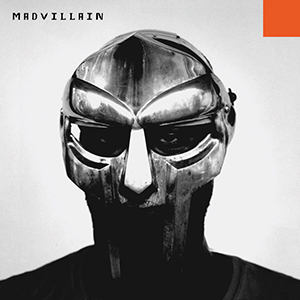On March 23, 2004, the musical chameleon Daniel Dumile, having released one commercial album as MF DOOM in 1999, two as King Geedorah and Viktor Vaughn respectively in 2003, teamed up with the legendary producer Madlib, under the collaborative name Madvillain. This project would go on to be one of the most treasured and seminal hip-hop works of all time.
Sporting 22 tracks and a 46-minute runtime, “Madvillainy” is chock-full of one-minute hitters. Having largely cut the presence of choruses on previous records, DOOM pushes this quality to the extreme. The artist speeds from track to track, only occasionally dropping more than one verse per slice of Madlib’s masterful production.
With these punchy cuts, MF DOOM came to hone his recognizable style of third-person rap. It’s clearer than ever before how self-assured he is with his rapping ability. He’s effortlessly confident, constantly witty and unwilling to let a single dull lyrical moment come to pass. Whether referencing an apathetic pickup attempt on “Operation Lifesaver aka Mint Test,” playing on his non-violent preaching on “Raid,” or dropping a rare verse of politically-charged bars on “Strange Ways,” DOOM never fails to include ample internal rhymes, uncanny flows and double-entendres.
Refusing to ever let one half of the Madvillain duo overshadow the other, Madlib constantly stitches together peculiar samples in shocking ways. Madlib puts out an almost overwhelming amount of variety while maintaining a strong sense of precise craft.
Take for example “Figaro,” which may initially appear as an instrumentally stripped-back track to make room for a tour-de-force from DOOM. Instead, the track more subtly relies on its jittery shaker and occasional keyboard stabs to give wind to its sail of a funky bassline. Where he was able to style around a simplistic three-note bass groove on “America’s Most Blunted,” he also crafted a constantly-evolving amalgamation of sound on “Curls.” Occasionally in need of a reprieve from DOOM’s onslaught, instrumental interludes like “Sickfit,” and “Do Not Fire,” are a crucial part of rounding out the listener’s experience between lyrical masterworks.
Thematically, “Madvillainy’s” glue is an assortment of comic book-inspired vocal samples which warn listeners of the two “villains.” Rather famously under the influence of psilocybin, Madlib crafted an uncanny yet humorous sonic world, stitched together like a mad scientist’s oddest creation. There is an undeniable charm in the album’s ability to transform the almost strange feeling it inspires when enjoyed in small doses, into a feeling of great satisfaction when processed as a whole.
Since its release, “Madvillainy “has dug its roots deep into the fabric of critically acclaimed hip-hop. Despite his untimely passing in 2020, DOOM remains ever-present. Countless rappers have credited DOOM as a major influence, and traces of the once-genre-defining signature style of this joint album can now be found everywhere. Earl Sweatshirt’s 2018 opus, “Some Rap Songs,” borrows from the defining chorus-free style of bite-sized tracks. Denzel Curry and Kenny Beats also teamed up in 2020 with a short collection of heavily Madlib-inspired tracks on “Unlocked.”
The list is almost endless. There aren’t many albums which have so strongly stood the test of time, but after 20 years, “Madvillainy” has surpassed all expectations.
Andrew C. Freeman can be reached at [email protected].



















